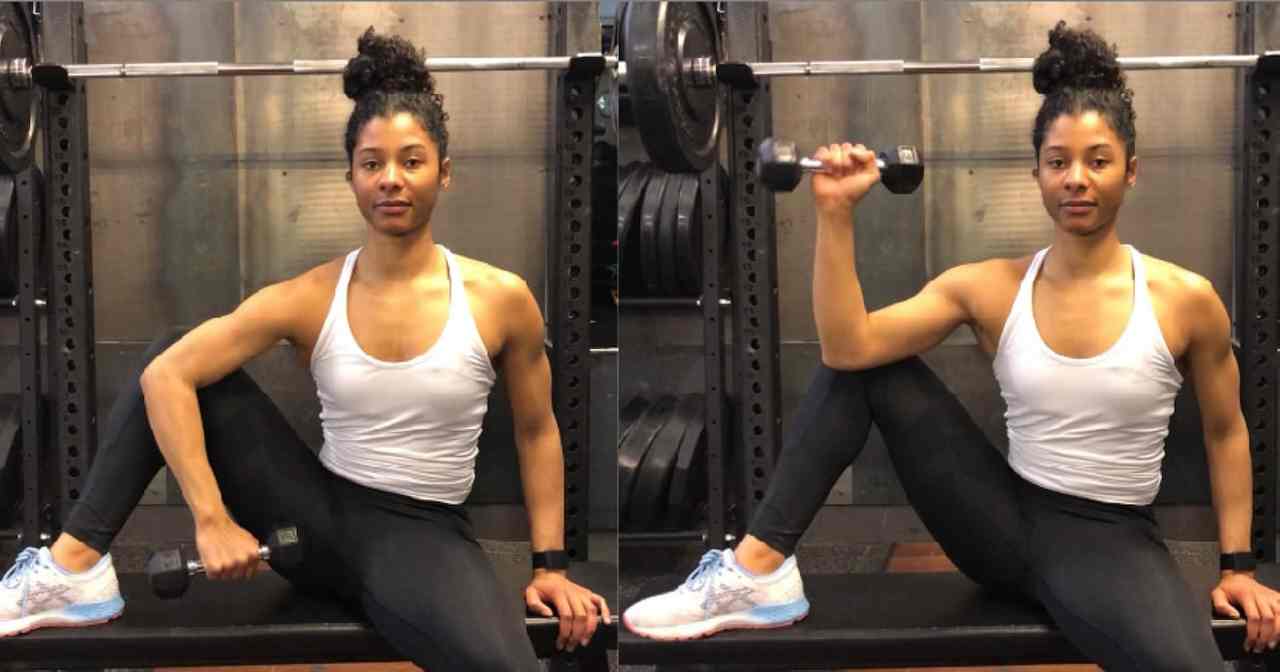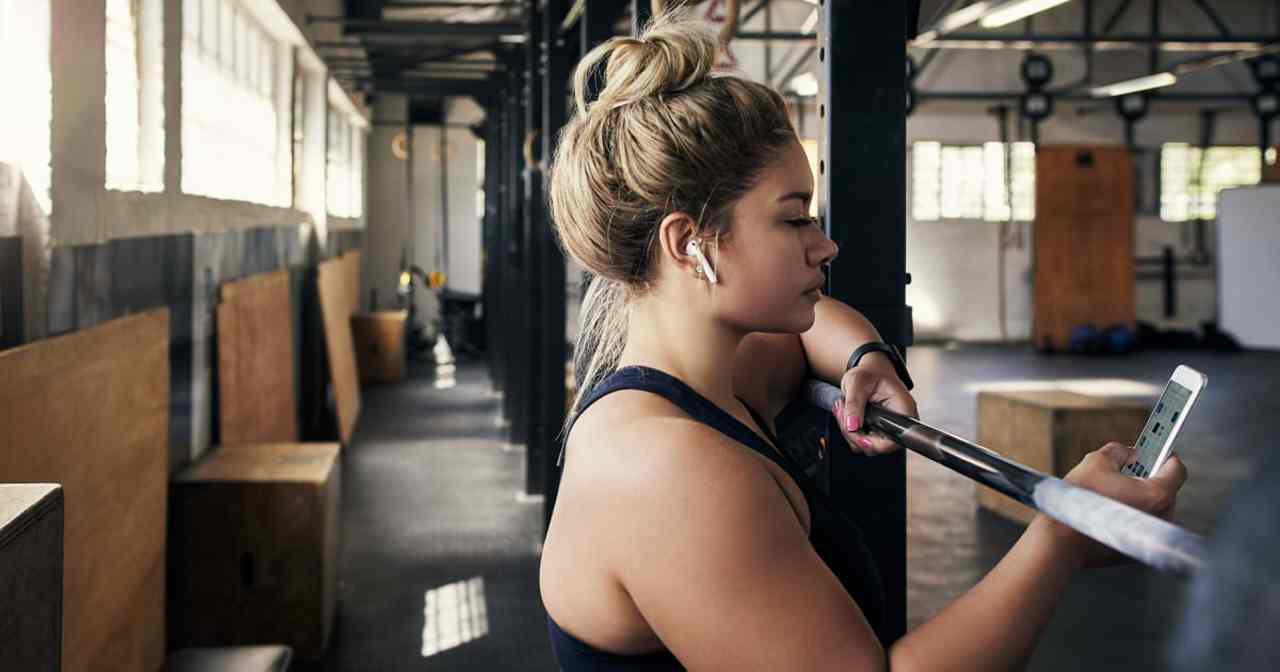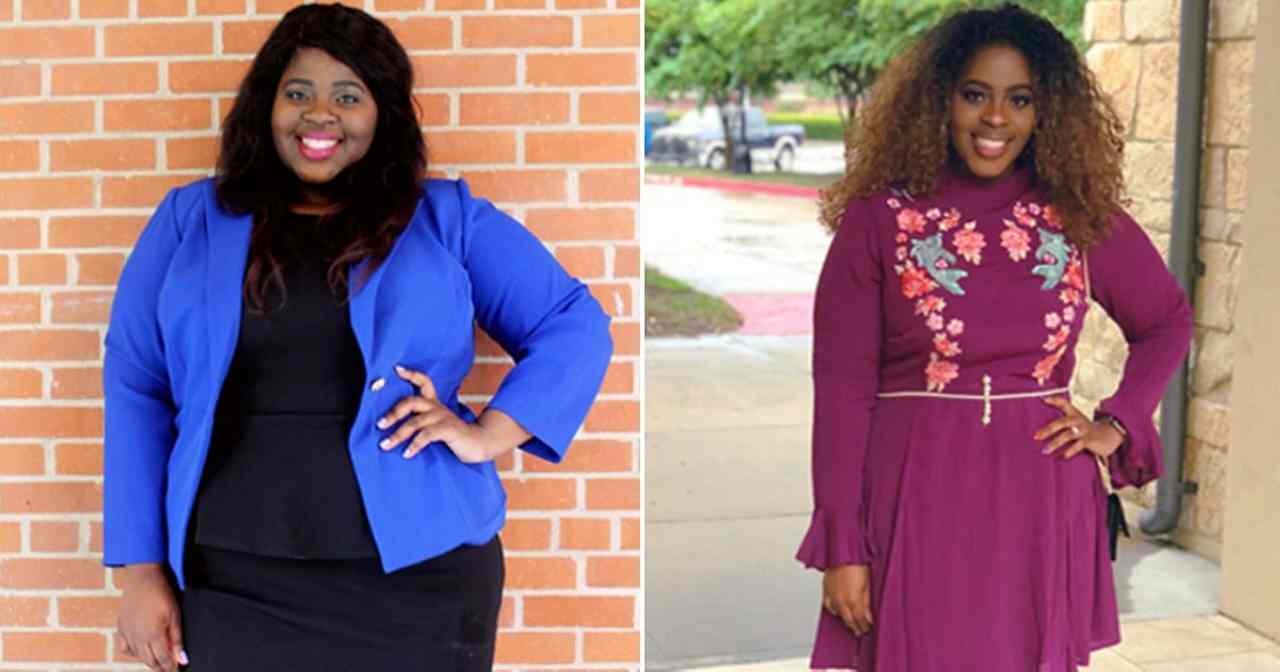
Intuitive eating, in a nutshell, means you honour your hunger, eat until you’re full, and don’t follow a restrictive diet. You basically listen to your body and eat the things you want to eat so you don’t binge on them later. It wasn’t until I spoke with NASM-certified personal trainer Allison Tibbs that she brought up the same sort of mentality for exercise: intuitive fitness.
What Is Intuitive Fitness?
Intuitive fitness is essentially staying in tune with what your body can handle before you start your workout as well as while you’re working out to prevent overuse, injury, and burnout. Allison explained, “It’s giving yourself enough grace to say, ‘Will this workout move me forward, or will it set me back?’ Because people get injured.” Fitness, she said, can start to become a form of punishment where recovery and rest is viewed in a shameful light. You push yourself too hard and begin to cultivate a negative relationship with exercise.
Allison experienced this in her own training. She gave herself a six-week program where she stayed mindful about her body daily. Why? Because structure, she said, is still important, and following a plan from a reputable source, or having some type of routine, is the most effective way to stay on track with your goals. So if she went into leg day knowing she’d be doing heavy deadlifts and squats and, after a body scan, realised she didn’t get enough sleep the night before and her stress levels were high, she’d find something else to do. She might try yoga, do some dance cardio, join a group workout class, or get in active recovery instead.
“People fed up with diet and wellness culture are looking for ways to make peace with food and exercise.”
Allison explained, “On a deeper level, it would be so unsafe for me to put myself under a squat rack knowing that I don’t have the energy, that my mindset isn’t where it needs to be. The results that I got were probably better than what I would have gotten if I’d stuck with [another] program because I was paying attention to rest and recovery.”
Alissa Rumsey, MS, RD, CSCS, certified intuitive eating counselor and owner of Alissa Rumsey Nutrition and Wellness, told POPSUGAR that though the industry as a whole can be confusing and toxic, intuitive fitness isn’t a new concept. Intuitive movement, she noted, was introduced by dietitians Evelyn Tribole and Elyse Resch in their book Intuitive Eating, originally published in 1995. “I think it is catching on more lately as people, fed up with diet and wellness culture, are looking for ways to make peace with food and exercise.”
Alissa added, “Both intuitive movement and intuitive eating require you to look inwards for inspiration and the determination of what types of movement or food would be best at the moment rather than relying on extrinsic motivation.” Again, you can still have a schedule, but the key, Alissa said, is flexibility in frequency of exercise and type of exercise. “The word ‘strict’ implies rigidity and a disregard for days when your body needs rest,” she continued. “While a consistent routine may be helpful for some people, it’s important to still be taking into consideration how your body is feeling and not just exercising because that was the day’s plan.”
How to Start Intuitive Fitness
The main starting point for beginning this practice is doing a body scan before your workout. Allison suggested asking yourself the following questions:
- “How’s my stress today?”
- “How am I feeling?”
- “Did I get enough sleep?”
- “Do I have enough fuel in my body?”
- “Did I eat properly enough to go through a heavy workout?”
Alissa said that, though switching over from a strict plan to one that’s more flexible can seem daunting and unstable, you’ll learn that your body could be better for it. When she works with clients on adopting intuitive eating for the first time, they find removing restrictions on food scary because, in their eyes, they’ll never find balance. But that changes when they begin to listen to their body, she said. The same thing, she said, happens with intuitive fitness. Alissa explained, “Your exercise routine may look different than when it was rigid, but it will be more joyful, more sustainable, and overall healthier. Because if exercise is causing you stress or anxiety, then it’s going to be counterproductive to your health goals.”
If you practice intuitive fitness and want to work out every day, that’s your prerogative. However, Alissa wants you to think about why you’re choosing to do so and what your goals are. Using daily exercise as a way to regulate stress is healthy, but if you have an all-or-nothing mentality when it comes to fitness, that’s when it’s smart to ask yourself important questions, she said. “Be aware of the times you are using exercise as a compensatory mechanism, like for something you ate,” she said. “These are external motivations that don’t take your body’s needs into consideration.” Rest days are important, and some argue that you’ll actually get more out of your workout after a rest day. Check out further tips for how to practice intuitive exercise on Alissa’s website.
How Trainers Can Practice and Promote Intuitive Fitness
Alissa said trainers can prep for weekly workouts the same way she’d work with her clients on meal prepping for intuitive eating so that if the client needs to adjust their routine one day, there are other options for how to train. “The key is flexibility. For a training plan, this could mean brainstorming different options with your trainer for days when you want something less intense or more intense,” she said. “As you learn more about your body, you may need to adjust and build in rest days based on your response.”
Trainers, Allison added, need to pick up on cues when their clients walk into the gym and evaluate what the best workout is for them that day. For instance, she’s had people come to a session and she can immediately tell they’ve been crying. Typically, she’ll give them options. They can go through their normal program, talk it out on the rower machine, or go to the turf and “throw things and slam things to get it out,” she said.
Take a few minutes to ask clients how they’re feeling, how their stress level is, etc. Allison said, “It’s part of our responsibility as trainers to do that extra step at the beginning of every session because we really want our clients to be successful.” It also, she said, gives the clients permission to ask themselves those same questions, and it provides them with different metrics of success. That mindfulness, she noted, can extend outside of the gym into everyday life.
Intuitive Fitness Isn’t Giving Up; It’s Being Smart, and It Can Help You Get Stronger
Listening to your body and making adjustments isn’t copping out, Allison said. “There’s a difference between ‘I just don’t feel like it because I just don’t feel like it and I’m unmotivated’ versus ‘Right now, I know what my workout entails, and if I go into the gym or I do this workout in the state that I’m currently in, chances are I will injure myself or I will set myself back.'” And having someone who supports you through that practice and gives you the tools to succeed with that mindset is everything.
Allison concluded, “Even now when I teach group fitness classes, I make this disclaimer. I always say, ‘Listen, some days you have it and some days you don’t. I’m not looking for perfection, but I am looking for effort.'” And whatever effort you bring, Allison says she’ll honour it.
Related:
Kayla Itsines Says Women May Be Missing Out on an Important Step at the Gym











